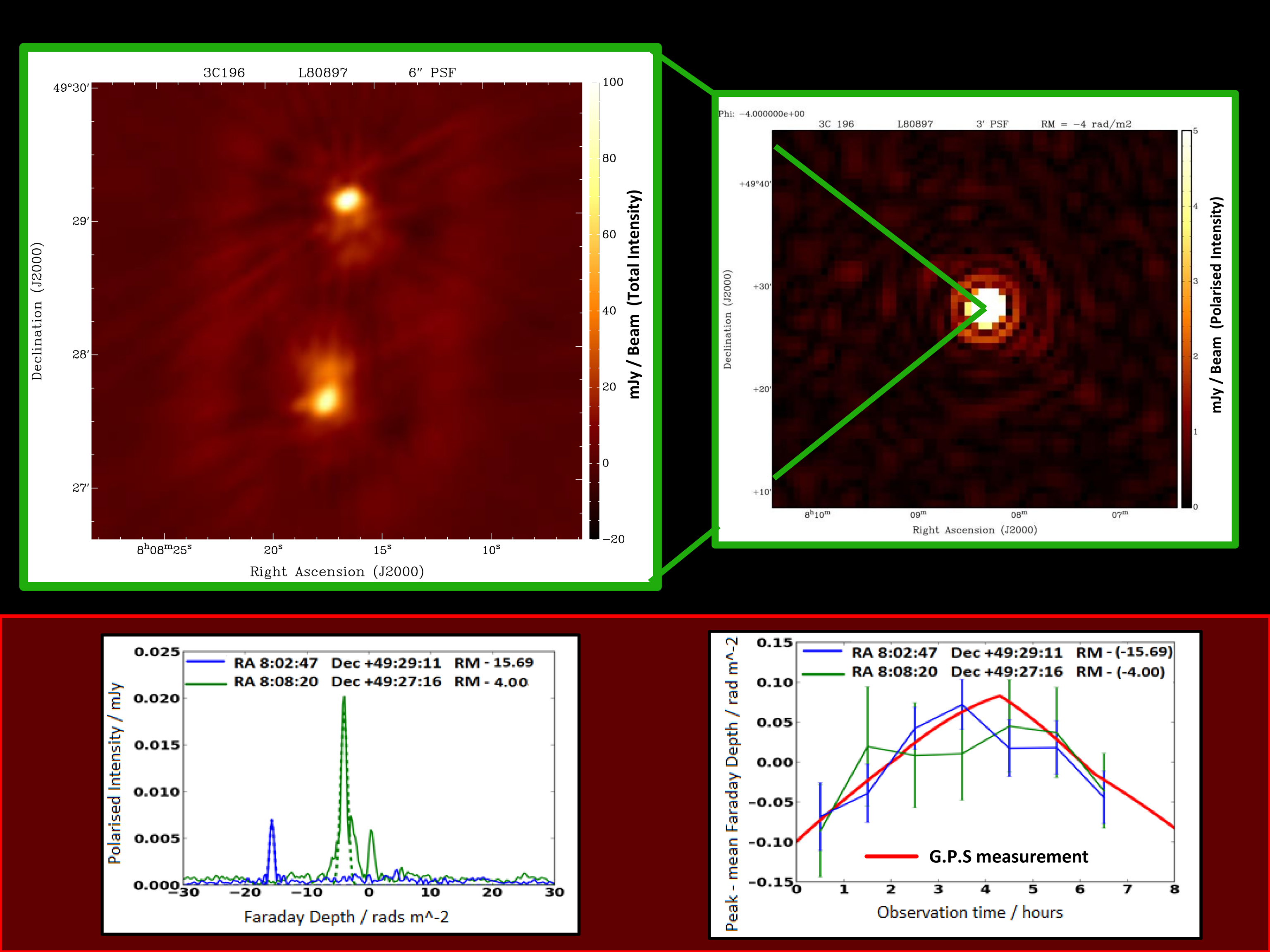Daily Image
17-09-2013Summerstudent project: Ionospheric Faraday Rotation
| Submitter: | David Starkey |
| Description: | Polarized radio signals that propagate through the ionosphere are subject to Faraday rotation of the plane of polarization. For polarization studies it is important to correct the data for this (time-varying) effect. One way to estimate the effect is using a model for the earth magnetic field combined with absolute TEC models that are obtained from fits on GPS data and can be found online (eg. ftp://ftp.unibe.ch/aiub/CODE/ ). The time and spatial resolutions of these external measurements are limited. Therefore, it would be a great benefit if one could obtain the ionospheric Faraday rotation directly from polarized sources in the field of view. Above we see the analysis of two polarised sources in an Rotation Measure (RM) cube centred on 3C196. The upper right plot shows a 3 arc minute resolution image of a point polarised source at Faraday depth -4 rad/m^2. Upon re-examining this source at higher 6 arc second resolution it appears that it is in fact a double radio source (shown top left where the colour axis is now total intensity). The lower left plot shows a Gaussian fit (green dashed line) to the peak in the Faraday spectrum for this source (green solid line), and another at a Faraday depth -16 rad/m^2 (blue lines). This fit was performed on 7 RM cubes, each averaged over 1 hour of observation time. We see a hint of a double peak in the Faraday spectra of the source at Faraday depth -4. rad/m^2, a result of the two radio sources in the double having slightly different Faraday depths. Performing the same analysis on each subsequent hour shows a slight variation in Faraday depth caused by ionospheric Faraday rotation. In the lower right figure one can observe that these variations are in agreement with GPS predictions. |
| Copyright: | David Starkey, Maaijke Mevius, Vibor Jelic, Ger de Bruyn |
| Tweet |  |
